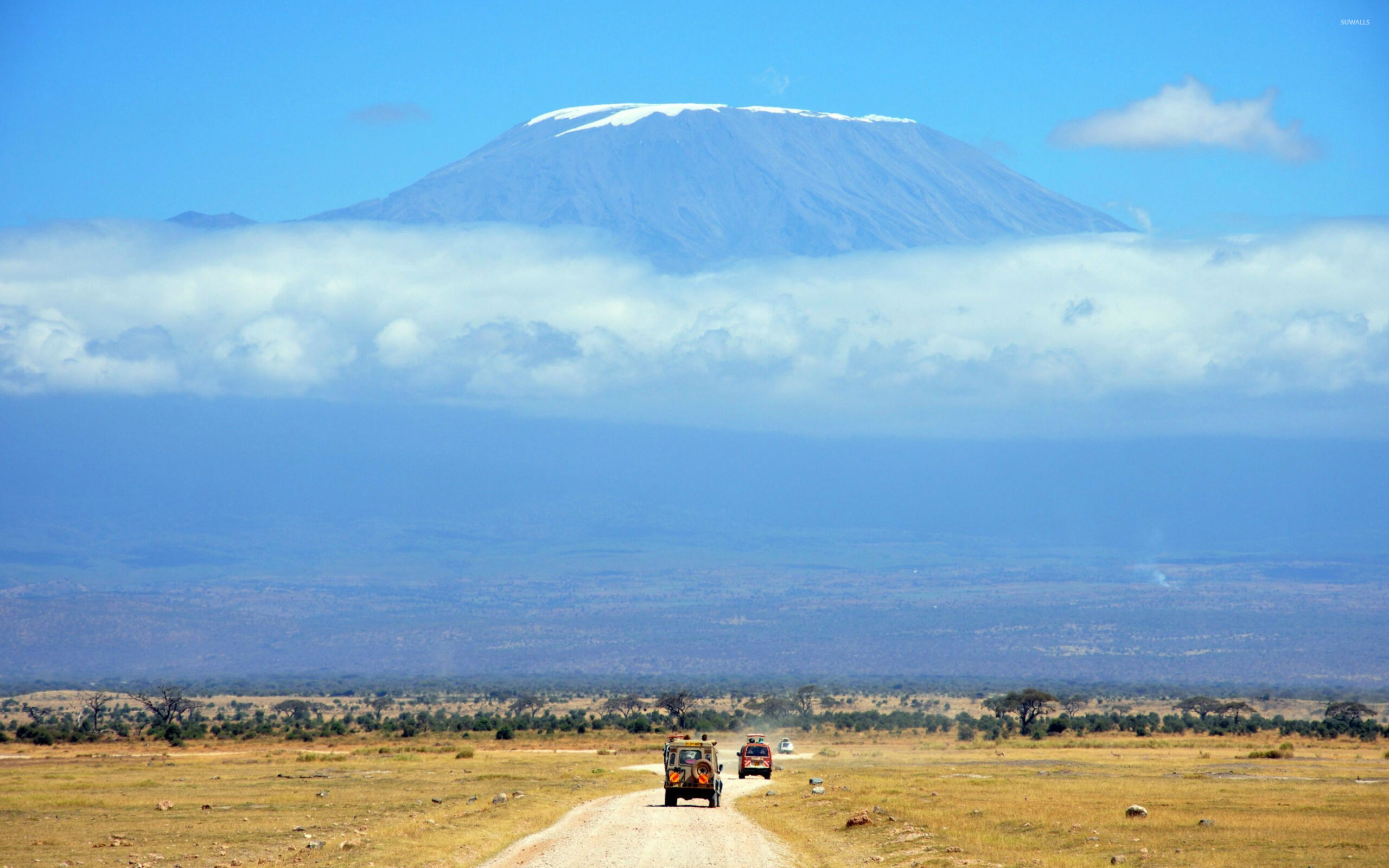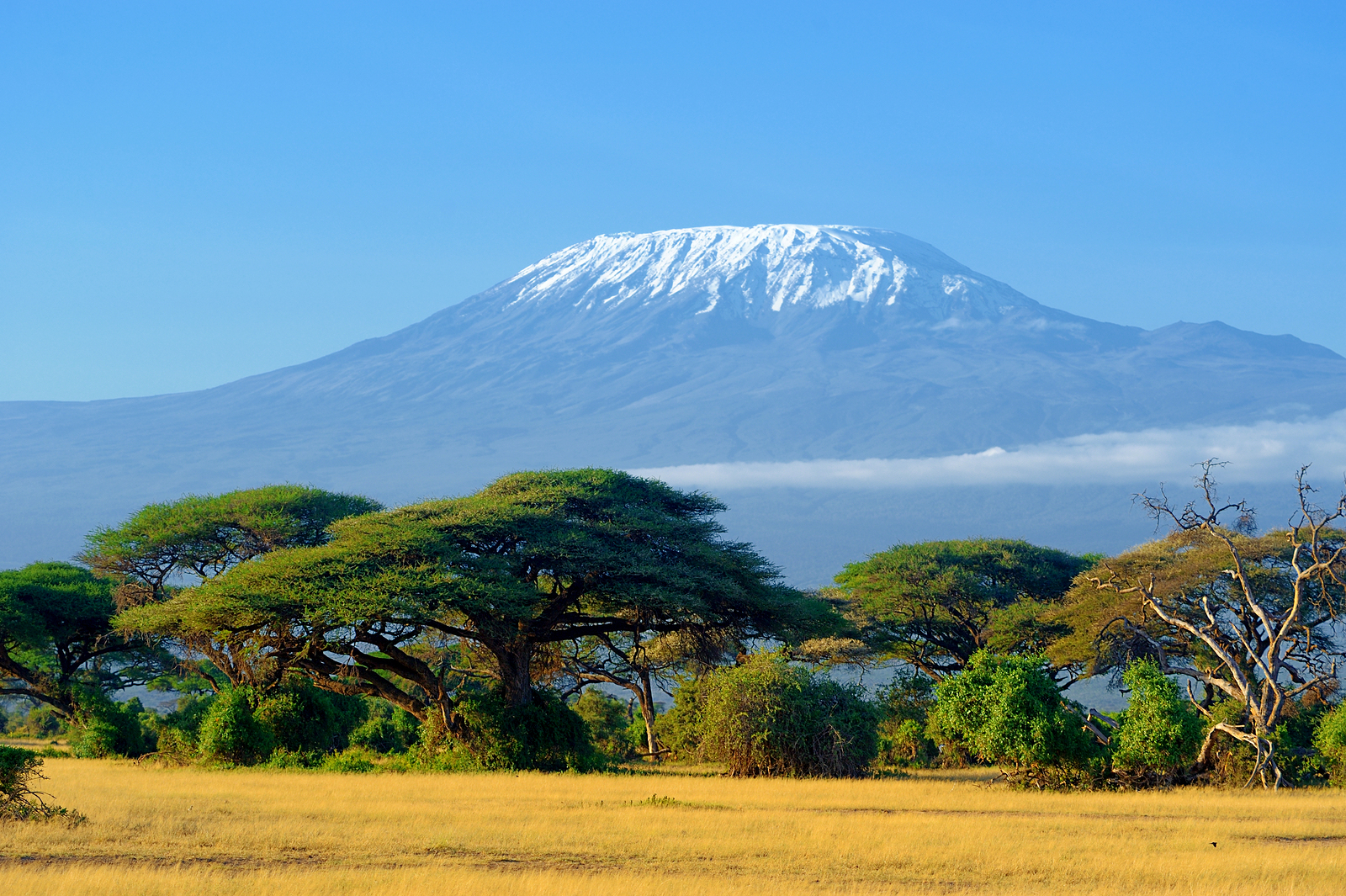Mt. Kilimanjaro Marangu 6 days


Itinerary for Hiking Mt. Kilimanjaro Via Marangu Route
Mount Kilimanjaro, the highest peak in Africa, stands at 5,895 meters (19,341 feet) above sea level. Located in Tanzania, this iconic mountain is renowned for its stunning, snow-capped summit and pristine, diverse ecosystems, ranging from lush rainforests to alpine deserts. Hiking Kilimanjaro offers adventurers a challenging yet rewarding experience, as they ascend through ever-changing landscapes to reach the "Roof of Africa".
The Marangu Route, often referred to as the "Coca-Cola" route, is one of the most popular routes to the summit of Mount Kilimanjaro. It’s the only route that offers sleeping huts in dormitory-style accommodations, making it a comfortable option, particularly during the rainy season. The following is a detailed itinerary for a 6-day climb on the Marangu Route, which includes an extra acclimatization day.
Good to Know:
-
Country: Tanzania
-
Visa Requirements: Yes
-
Languages spoken: English & Swahili
-
Per Person: $1700
-
Important to have Visa & Travel Insurance.
-
A knowledgeable guide will greatly enhance your experience.
-
Trekking Clothes, Personal Gear, Poles and Other Important Hiking equipment is necessary.
Day 1: Marangu Gate to Mandara Hut
Elevation: 1,870m (6,135 ft) to 2,720m (8,923 ft)
Distance: 8 km
Hiking Time: 4-5 hours
Habitat: Rainforest
Description: After breakfast at your hotel in Moshi or Arusha, you'll be transferred to the Marangu Gate for registration. The trek begins in the lush rainforest, where you might spot monkeys and other wildlife. The trail gradually ascends through the forest to Mandara Hut, where you'll spend your first night on the mountain.
Accommodation: Mandara Hut (Wooden Hut)
Day 2: Mandara Hut to Horombo Hut
Elevation: 2,720m (8,923 ft) to 3,720m (12,205 ft)
Distance: 12 km
Hiking Time: 6-8 hours
Habitat: Heathland
Description: Today, the trail continues through the rainforest and then opens up into the heathland, with stunning views of Mawenzi and Kibo peaks. The trek is steady and not overly steep, allowing for gradual acclimatization as you make your way to Horombo Hut.
Accommodation: Horombo Hut (Wooden Hut)
Day 3: Acclimatization Day at Horombo Hut
Elevation: 3,720m (12,205 ft) to 4,000m (13,123 ft) and back to 3,720m (12,205 ft)
Distance: Optional 5-10 km
Hiking Time: 3-5 hours
Habitat: Heathland/Moorland
Description: This extra day at Horombo Hut is crucial for acclimatization. You’ll take a short hike towards Mawenzi Hut or Zebra Rocks, gaining elevation to help your body adjust to the thinner air before returning to Horombo Hut for a second night. This day helps improve your chances of reaching the summit.
Accommodation: Horombo Hut (Wooden Hut)
Day 4: Horombo Hut to Kibo Hut
Elevation: 3,720m (12,205 ft) to 4,703m (15,430 ft)
Distance: 10 km
Hiking Time: 5-7 hours
Habitat: Alpine Desert
Description: The trek continues up through the alpine desert, with the landscape becoming more barren and rugged. The path is steeper and you may start feeling the effects of altitude. The route takes you past the "Last Water Point" at 4,200 meters, and the terrain becomes more desolate as you approach Kibo Hut, where you’ll rest and prepare for the summit attempt.
Accommodation: Kibo Hut (Stone Hut)
Day 5: Kibo Hut to Uhuru Peak to Horombo Hut
Elevation: 4,703m (15,430 ft) to 5,895m (19,341 ft) to 3,720m (12,205 ft)
Distance: 21 km (6 km ascent, 15 km descent)
Hiking Time: 12-16 hours
Habitat: Arctic Zone to Heathland
Description: Your summit attempt begins around midnight, with a challenging ascent up the scree slopes to Gilman’s Point (5,685m) on the crater rim. The climb is steep and requires mental and physical endurance. From Gilman’s Point, it’s a gradual hike to Uhuru Peak, the highest point in Africa. After celebrating your achievement and taking photos, you'll begin the long descent back to Horombo Hut, stopping briefly at Kibo Hut for a rest and lunch.
Accommodation: Horombo Hut (Wooden Hut)
Day 6: Horombo Hut to Marangu Gate
Elevation: 3,720m (12,205 ft) to 1,870m (6,135 ft)
Distance: 20 km
Hiking Time: 5-7 hours
Habitat: Heathland to Rainforest
Description: After breakfast, you'll continue your descent through the heathland and rainforest back to the Marangu Gate. Here, you'll receive your summit certificate and be transferred back to your hotel in Moshi or Arusha for a well-deserved rest.
Accommodation: Hotel in Moshi/Arusha
What’s Included:
Accommodation:
2 nights in a hotel (one night before the trek and one night after)
4 nights in mountain huts during the trek
Meals:
All meals on the mountain (breakfast, lunch, and dinner)
Drinking water during the trek
Guides and Staff:
Professional mountain guides
Porters to carry equipment and supplies
Cooks to prepare meals
Park Fees:
Kilimanjaro National Park entrance, camping, and rescue fees
Group Equipment:
Communal camping equipment (tables, chairs, eating utensils)
Emergency oxygen for altitude sickness
Transportation:
Transfers between the hotel and the Marangu Gate
Summit Certificate:
Certificate of achievement for reaching Uhuru Peak or Gilman’s Point
What’s Not Included:
Personal Gear:
Trekking clothing (jackets, boots, gloves, hats, etc.)
Sleeping bags (recommended to be rated for cold weather)
Trekking poles
Travel Insurance:
Comprehensive travel insurance covering high-altitude trekking
Visa and Vaccinations:
Tanzanian visa
Required vaccinations (such as yellow fever)
Meals Not on the Mountain:
Meals in Moshi/Arusha before and after the trek
Tips for Guides, Porters, and Cooks:
Tipping is expected and typically ranges from $250 to $300 per person for the entire crew
Personal Expenses:
Souvenirs, snacks, and drinks not included in the trekking package
Optional Tours:
Any additional activities or tours, such as safaris or Zanzibar trips, before or after the trek
Emergency Evacuation Costs:
Helicopter evacuation or additional medical costs beyond what is covered by the park rescue fees and personal insurance
This 6-day Marangu Route itinerary provides a good balance between challenge and comfort, offering scenic beauty and the security of hut accommodations along the way.


How to Prepare yourself before climbing Kilimanjaro via the Marangu Route involves physical, mental, and logistical preparation. Here's a comprehensive guide:
Physical Preparation
Cardiovascular Training: Engage in regular cardio workouts, such as running, cycling, swimming, or hiking. Aim for at least 3-5 sessions per week, building up to longer durations as your fitness improves.
Strength Training: Focus on strengthening your legs, core, and upper body. Exercises like squats, lunges, step-ups, planks, and push-ups are essential. Strength helps with the demands of uphill trekking and carrying your daypack.
Endurance Hiking: Practice hiking on varied terrain while carrying a backpack. Try to simulate long trekking days by gradually increasing the duration of your hikes to 4-6 hours or more.
Acclimatization Hikes: If possible, do some hikes at higher elevations to get your body used to lower oxygen levels. Even a few days spent at moderate altitudes (2,000-3,000 meters) can help.
Mental Preparation.
Mindset: Prepare yourself for the challenge mentally. The summit push can be tough, especially with the altitude. Developing a positive and determined mindset is crucial.
Educate Yourself: Learn about the Marangu Route, what to expect at different stages, and the symptoms of altitude sickness. Knowing what lies ahead helps reduce anxiety and surprises.
Gear and Packing Clothing:
Base Layers: Moisture-wicking tops and bottoms.
Insulation: Fleece jacket and down or synthetic insulated jacket.
Outer Layer: Waterproof and windproof jacket and pants.
Trekking Pants: Comfortable, quick-drying pants.
Gloves: Thin liner gloves and insulated gloves or mittens.
Hat: Warm hat and a sun hat for lower elevations.
Footwear:
Hiking Boots: Well-broken-in waterproof hiking boots.
Socks: Wool or synthetic hiking socks. Bring multiple pairs.
Gaiters: Optional, for keeping debris out of your boots.
Backpack:
Daypack (20-30L): For daily essentials (water, snacks, camera, rain jacket).
Duffel Bag: Porters will carry this, so pack all your gear in a sturdy, waterproof duffel.
Sleeping Bag: Rated for at least -10°C (14°F).
Trekking Poles: Helpful for balance and reducing strain on your knees.
Hydration System: Hydration bladder or water bottles (minimum 2-3 liters).
Headlamp: With extra batteries for early starts and summit night.
Sunglasses and Sunscreen: High UV protection is essential due to the altitude.
Snacks: High-energy snacks like trail mix, energy bars, and dried fruit.
4. Logistics and Planning
Choose a Reputable Tour Operator: Ensure your guide company has a good reputation, experienced guides, and a strong focus on safety.
Travel Insurance: Make sure your travel insurance covers trekking at high altitudes and emergency evacuation.
Visa and Vaccinations: Obtain a Tanzanian visa if required and ensure your vaccinations are up to date, including yellow fever, if applicable.
Gear Check: Before departure, do a final gear check to ensure you have everything you need and that all items are in good condition.
5. On the Mountain
Hydration: Drink plenty of water each day to stay hydrated and help with acclimatization.
Pace Yourself: Go slowly, even if you feel strong at the start. The motto "pole pole" (slowly, slowly) is key to success on Kilimanjaro.
Listen to Your Body: Pay attention to how you feel, especially signs of altitude sickness. Communicate with your guide if you're experiencing any issues.
Nutrition: Eat well at every meal to keep your energy levels up, even if you lose your appetite at higher altitudes.
Rest: Get as much sleep as possible, especially before the summit night.
By following these steps, you'll be well-prepared to take on the challenge of climbing Kilimanjaro via the Marangu Route.
Low season: April - May
Mid season: The rest of the year
High season: July, August, end of December, and January.
